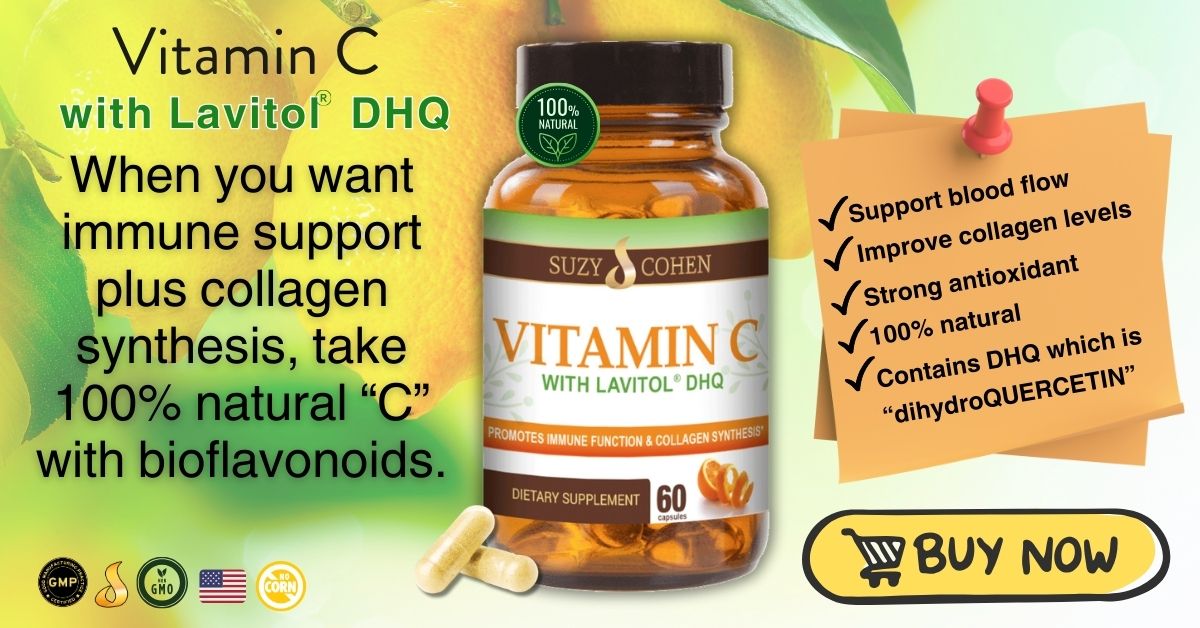Vicodin and Lortab are two brand names of one of the most popular drugs in the entire world! Generically, it is called “hydrocodone with apap” where the “apap” is an abbreviation for acetaminophen (aka Tylenol®). Everyone gets the generic “hydrocodone/apap” as opposed to the brand name because it’s so much cheaper. When I worked in a busy retail pharmacy in Florida, this medication was on the fast mover shelf because it was dispensed by by the thousands each day. Some patients would get 240 tablets all at once, as a month’s supply!
I live in Colorado now, and the marijuana industry is a cash crop! Lots of people here use it for pain relief, and children for seizure management, if that interests you: Marijuana Coming to a Pharmacy Near You.
Hydrocodone/apap is a prescription analgesic and in the category of “opioids” which you’ve been hearing a lot about lately. Opioids are man-made drugs intended to look a lot like the naturally-produced opiates made in your own body. The opioid drug binds to the receptor on your cell’s out membrane, and unlocks a variety of feel-good, ’numbing’ compounds which relax your body, increase pleasurable feelings and also suppress pain signals. If you require this medication for pain management there are some things you should know. Let me help you today:
1. Never stop suddenly.
If you’ve been supported on this medication for more than 2 weeks, do not stop suddenly. It has to be weaned. Your body has already grown tolerant to the medication and stopping suddenly could produce dangerous withdrawal effects. You’ll want to step down your dose and how much you reduce it is between you and your doctor. But it should be titrated and weaned down. If you’ve been on the analgesic for years, the weaning off period could take you months, it’s a very slow process due to the downregulation of receptors that normally process important neurotransmitters such as serotonin, acetylcholine, glutamate, GABA and dopamine.
2. Offset the side effects.
Hydrocodone/apap (Vicodin) is known to cause constipation as its number one side effect. You can and should anticipate it and take a stool softener like docusate.
Just a note however, that in some people, extreme sedation is more prominent than constipation, but over time the tranquilizing effect wears off and then the GI problems like resistant constipation, nausea or bloating become more challenging to deal with. Again, expect constipation if you take these drugs.
I recommend plenty of water each day, and a diet that is rich in fiber, fruits like prunes and even oatmeal. This may not help, and in that case, an over-the-counter (OTC) laxative like Miralax (polyethylene glycol 3350) or a fiber supplement like Metamucil could help. Senna or Ex-Lax contain sennosides which appear to be more effective than bisacodyl (Dulcolax) for opioid-induced constipation.
For those of you who have been on this medication or a similar one such as Oxycodone/apap (Percocet) or Oxycontin® for a long time, I would like to enlighten you that constipation is the least of your worries! There is a condition termed “Narcotic Bowel Syndrome” or NBS.
It has to do with gastrointestinal hypersensitivity. It’s terribly under-recognized! Down the rabbit hole you go with a myriad of tests that all come back negative/unremarkable. How many of you have had recurrent abdominal issues, with no relief from any medication, diet or surgery? Yet they can’t really find anything so they tell you to take a probiotic… never solving the issue (which I’m saying is related to opioids).
You can read more about the clinical features in the article from 2007 entitled, The Narcotic Bowel Syndrome: Clinical Features, Pathophysiology and Management.
There is a progressive increase in abdominal pain that continues with people despite higher dosing of pain meds, even meds intended to relieve the abdominal pain. It’s never-ending and you will wind up getting CT scans, abdominal X-rays, MRIs, MRCPs, Ultrasounds, endoscopes down your throat, colonoscopies up through the bottom… and on and on! These will probably all be unremarkable or maybe there will be signs suggestive of a GI obstruction. I’m trying to save you money, time and anguish… if you’ve been on an opioid drug for more than a year, you might have NBS. I’ll write about this more in a future article. For now, just be aware.
NBS is characterized by the progressive and somewhat paradoxical increase in abdominal pain despite continued or escalating dosages of narcotics prescribed in an effort to relieve the pain.
You may have vague and constantly changing abdominal aches and pains. This is due to a condition that is termed Narcotic Bowel Syndrome (NBS) is a subset of opioid bowel dysfunction that is characterized by chronic or frequently recurring abdominal pain that worsens with continued or escalating dosages of narcotics. This syndrome is under recognized and may be becoming more prevalent. This may be due in the United States to the increased narcotic usage, especially for chronic pain. NBS can and does occur in people who have had no prior stomach/intestinal trouble.
3. Drug Nutrient Depletion aka Drug Mugging
Hydrocodone itself is a drug mugger of dopamine, meaning it will cause your body to ‘squirt’ a little of this pleasurable hormone with every dose, using it faster than normal. That’s one of its many different mechanisms of action. But with that, there’s the caveat that eventually your body habituates to the effect, then you need a higher dose because you’ve got new receptors popping up waiting for the extra dopamine you started making… and then a higher dose. And more and more…
After awhile, dopamine stores are depleted because you can only make so much. Receptor function changes. Gene expression changes. If you stop the hydrocodone (or whatever opioid) you’ve been taking, then your dopamine squirt is now gone, and you’ll fall into a deep dark depression. So be aware if you’re in the withdrawal phase, that a dopamine-lifting anti-depressant or herbal remedy may be in order for you (for a little while), until your body’s natural production is restored.
Hydrocodone is also a drug mugger of folate (what you might mistakenly refer to as “folic acid”), but regardless of what you call it, hydrocodone depletes B9, and as you might expect, addicts present with higher levels of homocysteine. You can read a more about that and see the research by going HERE and also HERE.
So what that means is that your methylation is impaired, whether or not you have A1298 or C677T or any other genetic SNP… your homocysteine is going up because hydrocodone is a drug mugger of folate. Elevated homocysteine leads to depression, read about that in my article called Homocysteine is Connected to Mood and Mental Health.
Remember, we’re focused today on hydrocodone, and what I’m saying is that hydrocodone and other opioids can impact your mood and cause a deep depression via at least two mechanisms… one, raising homocysteine via the depletion of folate and two, reducing production of dopamine due to the depletion of folate AND direct drug mugging of the neurotransmitter!
Take ONLY if needed, for short terms and in low doses!
Do you want to watch my quick video “Methylation in a Minute” where I explain it all? Just CLICK HERE and I will nutshell it for you with a screenshare video.
Here are 3 articles that I wrote to help you understand methylation:
1. Methylation Leads to 100s of Diseases
2. Medicine Messes Up Your Methylation
3. Genes, Methylation and Your Health
As for the apap, this is short for acetaminophen, aka paracetamol which is a popular OTC analgesic sold worldwide. It comes with the caution to protect your liver because liver function decreases, and so do detoxification pathways that normally clear free radicals. Think of glutathione. It gets mugged by apap.
Selenium is useful and if you take high doses of acetaminophen (approx 1,000 mg per day or more) then selenium is what I’d recommend for you because it blocks a pathway that would otherwise cause a liver-toxic metabolite. The selenium pushes a better pathway called “glucoronidation” in your body which is what you want. Without a smidge of selenium, your body is apt to produce more of another metabolite called N-acetyl-p-benzoquinone-imine. This big word is the name of a chemical that we abbreviate in the literature to NAPQI, that is also called ACETIMIDOQUINONE and again, this compound is a naturally-occuring downline metabolite of acetaminophen and it’s toxic. Selenium minimizes that pathway and production, therefore it reduces the harm done in the body while you’re taking acetaminophen,* especially if you are prone to liver problems. Selenium is also useful in maintaining normal cell proliferation and apoptosis.*
4. Never Drink Alcohol or Take Sleepers.
There are many interactions with opioids, especially with medications that also go through the CYP3A4 (and inhibit that pathway), however, the interaction I want to focus on today is are that deals with CNS depressant agents.
CNS means Central Nervous System which equals your brain and spinal cord. When you suppress the CNS, everything slows down… digestion, thinking time, reaction time, reflexes, breathing, and more. You feel sedated and your CNS is depressed and this is due to a bunch of different compounds including elevated GABA. You might understand this sensation if you drink alcohol to fall asleep, of if you’ve ever took a pain pill after some dental work or childbirth… maybe you felt sleepy and loopy. Perhaps you’ve taken a Benadryl for allergies. Or maybe you take a benzo like Ativan, Xanax or Klonopin? That’s what they give many people for anxiety and sleep.
If you take those, read my article, Benzodiazepine Dangers and Lies. The FDA decided to put out a warning recently about combining benzos with opioids, which you can read HERE, but it was after millions of people, and decades of prescriptions were written for this very combo. For example, take alprazolam at night for sleep and hydrocodone during the day for pain. Again, this is a bad combination, and decades later, you are being warned about it. For the record, I did tell you about the potential dangers back in 2004, so if have been following me since then, you already knew about the deadly combo.
Anyway, that sleepy, messed up zombie-like sensation that occurs along with slowed respiration is what a CNS depressant does to most people. It’s not up for debate. It happens.
That effect wears off if you’re taking a small dose that is correct for you, and your body size, and kidney function, and age. Lots go into dosing a medication so that the CNS depressant action is mild and finite.
This is why combinations of two or more CNS depressants are deadly.
1 plus 1 equals 4
Opioids like hydrocodone can cause your respiration to slow down, and this happens to everyone, the extent to which it occurs is based upon the dosage you’ve taken. Combination of 2 or more CNS depressants can be fatal.
Another reason to do what I always say: Start low and go slow.
The reason over 30,000 of people in the United States die every year is due in part to the combination of opioid drugs with sleeping pills, tranquilizers or alcohol. Over 25 million people annually, including 2.5 million children, worldwide. The effect of CNS depression and reduced respiration is synergistic, at which point breathing slows down and sometimes stops altogether. This leads to unintended fatalities. It’s sad how many people unknowingly have taken their own life by combining alcohol and hydrocodone! Or with a sleep aid (even and OTC sleep aid) because the combination is deadly. If you don’t die, you could wind up with brain damage or in a vegetative state.
5. Don’t Naively Combine with Herbal Sedatives or Nervines
Some people assume that herbs and botanicals are safe all the way around, but that’s not the case. Herbs have very strong medicinal actions and many are CNS depressants, driving up GABA so there are also herbal interactions that you need to be aware of.
Never combine the following sedative herbs with your opioid (and this is not a complete list):
- Magnolia Bark
- Skullcap
- California Poppy
- Lavender
- Kava
- Chamomile
- Valerian Root
- Lemon Balm
- Passionflower
- Catnip
- Hops
CLICK HERE to purchase a copy of my book Drug Muggers: Which Medications Are Robbing Your Body of Essential Nutrients–and Natural Ways to Restore Them

Suzy Cohen, has been a licensed pharmacist for over 30 years and believes the best approach to chronic illness is a combination of natural medicine and conventional. She founded her own dietary supplement company specializing in custom-formulas, some of which have patents. With a special focus on functional medicine, thyroid health and drug nutrient depletion, Suzy is the author of several related books including Thyroid Healthy, Drug Muggers, Diabetes Without Drugs, and a nationally syndicated column.


